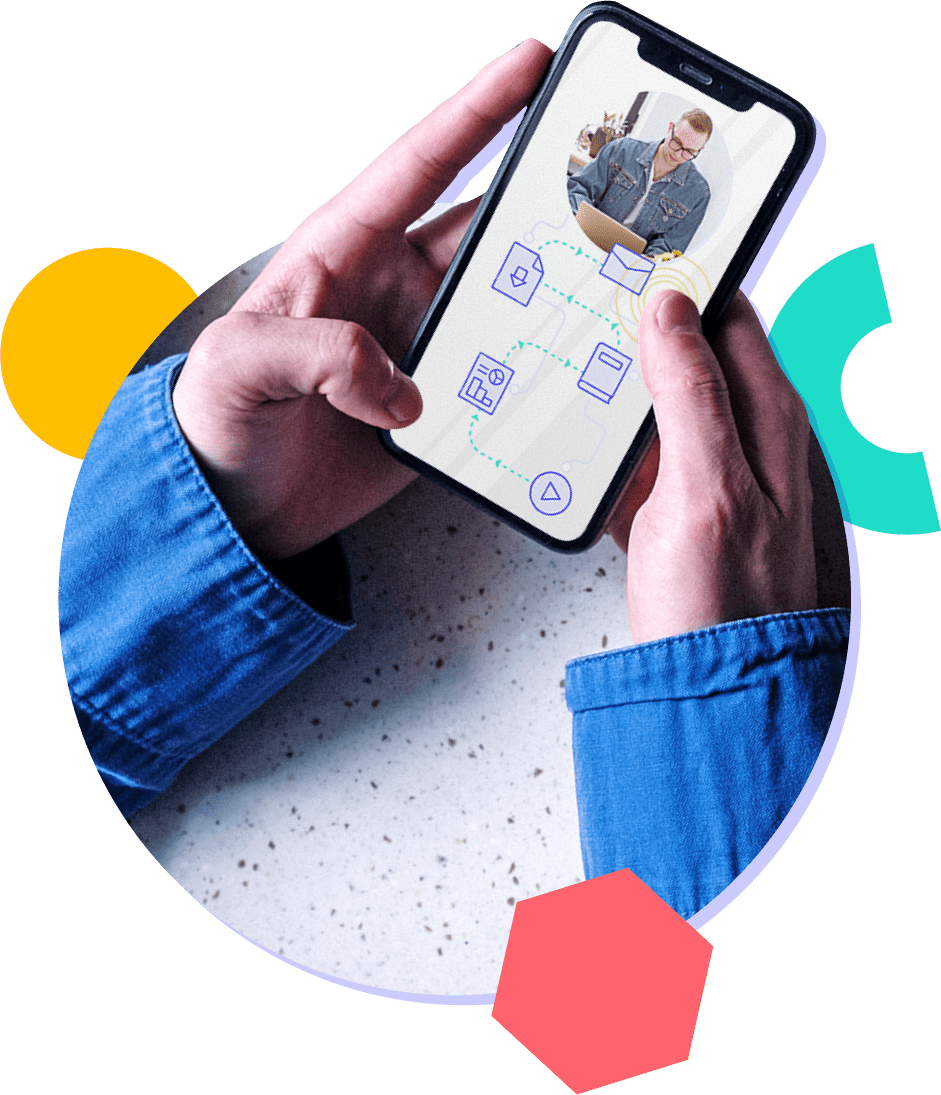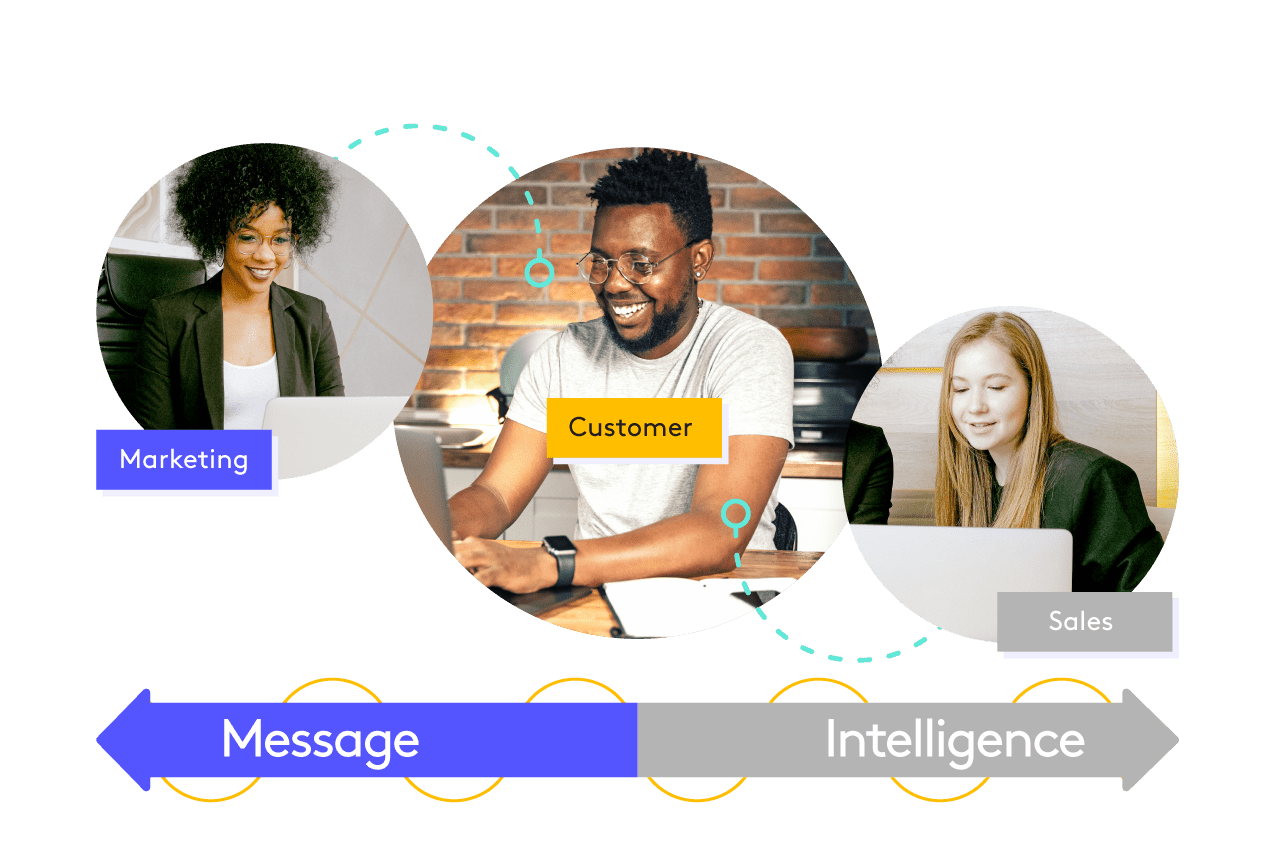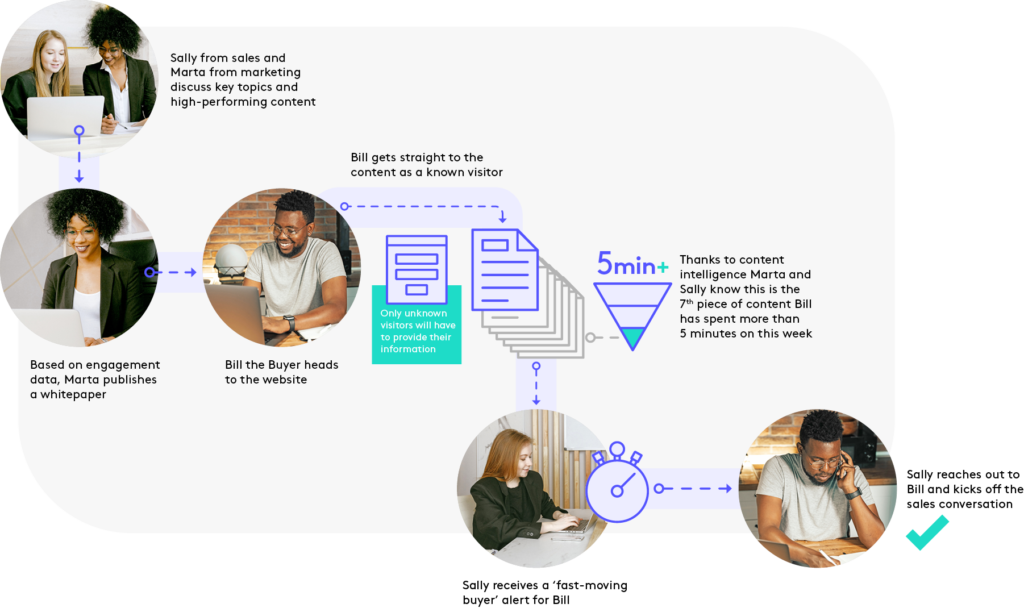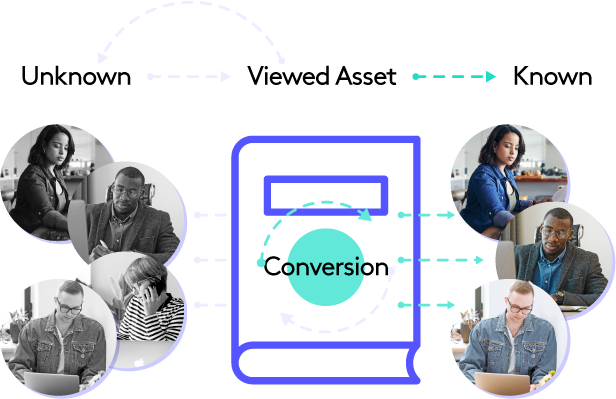Content Intelligence Gives Your ABM Strategy The Personal Touch It Needs
Leverage personalized messaging to deliver strategic, account-specific experiences at scale.

ABM (Account-Based Marketing)
According to Gartner, ABM is a go-to-market strategy targeting certain accounts with a synchronized, continuous set of marketing and sales activities. With ABM, instead of casting a wide net, a B2B marketer gets intentionally selective about focusing on leads or accounts that have a high chance of conversion. ABM campaigns normally take three approaches:
- 1:1 – marketing campaigns delivering bespoke content and messaging directly to individual target accounts.
- 1:few – marketing campaigns targeted to specific named accounts at scale by refining targeting, analytics, and personalization across multiple accounts in the same industry or maturity stage.
- 1:many – marketing campaigns delivered to thousands of accounts considering their business needs, goals, and challenges based on customer demographics, internet browsing activity, ad delivery and geolocation.
ABM seems like one of those things where everyone says they’re using it, but no one’s really sure how to start using it. That’s not a slight against companies; overhauling how you approach your go-to-market strategy and getting buy-in from others can be an uphill battle. It’s even more difficult to make the shift if you’re at a company that’s meeting revenue targets the old fashioned way (i.e. before ABM came on the scene).
Why fix something when it’s not broken, right?
Wrong. While the old way of ‘doing’ marketing isn’t actually broken, ABM has ushered in a new way to approach targeting customers, and it’s being adopted fast. Hubspot reported that in 2021 70% of marketers reported using ABM, which was up from 15% in 2020, but recent studies from eMarketer showed only 17% of B2B marketers worldwide said their ABM program was mature and driving strategic growth, so it’s clear that there is room to improve.
Focus your marketing efforts on accounts that already show intent to purchase
Start sales outreach earlier in the buying process
Maximize the ROI from marketing campaigns
Continue to work towards stronger sales and marketing alignment
By moving to an account-based approach, you’re giving yourself a competitive advantage, and developing key pieces of your go-to-market strategy like target account lists, high value offers, or ideal customer personas. On top of that, using account-based methods makes both marketing and sales stakeholders resulting in more alignment between your teams.
Is content intelligence the missing piece to your ABM puzzle?
ABM is a huge space, and there are myriad solutions out there to help you level up your ABM game. In the case of this playbook, we’ll be focusing strictly on content intelligence and how it can help businesses with their ABM strategies.
Gartner’s diagram below shows the key difference between traditional marketing and ABM, in that traditional marketing sees sales and marketing in silos, while ABM shows the two teams working together targeting the same customer account. The best way to get to a place where your sales and marketing orgs are working towards the same goals is by giving them access to the same information and data, and content intelligence is the best way to bridge that gap.
Marketing Sales Relationship
Traditional
ABM
You can learn more about the importance of sales and marketing alignment in our article Bridging the Sales and Marketing Gap, but the main takeaway is that by including content intelligence as part of your ABM strategy, teams are equipped with valuable insights about content engagement and performance (which benefits marketing), and target account behavior (which benefits sales). By using these insights during the buyer journey, you’re keeping your two revenue teams in lockstep with one another. See the diagram below for more insight into how content intelligence can have a big impact on how content intelligence is a gamechanger with something as simple as publishing a whitepaper.
Top 3 challenges content intelligence addresses
There are a number of use cases for content intelligence, but with ABM being such a hot topic, it’s useful to see how content intelligence can help reduce some of the friction experienced in the industry. In HubSpot’s 2021 Not Another State of Marketing Report, research shows that the main challenges companies face when launching an ABM program can all lead back to content:
1. Delivering a personalized customer experience (45%)
A personalized customer experience can mean a million things depending on the industry you’re in. In B2B, it refers to the touchpoints that make up the buyer’s journey. As we know from DemandGen’s buyer process timeline, most of that is done individually and through self-education and self-nurturing using content that your company has written and strategically served up. Content intelligence is the key to providing these personalized experiences because you’ll gain the ability to guide your audience to relevant and contextual content using artificial intelligence.
2. Knowing how to choose target accounts (41%)
You can choose your target account list based on firmographic variables: industry, maturity stage, size, etc. Leveraging content intelligence as part of your ABM strategy can add another one to the mix: existing interest in your product. Through PathFactory’s partnership with 6sense, you can use content intelligence to see who is interested in your product and content, at the account- and individual-level.
3. Knowing what content to use (40%)
Companies will spend resources creating content, but that’s only half of the battle. It’s important to pay attention to the spot in the funnel the content belongs to, how content is performing, and how it helps guide a reader through the buying process. This is one of the best use cases for content intelligence, because it can give you the insights you need, down to the best-performing topics and formats, that enable your buyers to self-educate about your products.
Elevating your ABM strategy
Whether you’re just getting started or leveling-up your current approach to optimizing your omni-channel nurture strategy, it’s important to acknowledge that every company is at a different stage in their process. In the section below, learn about the three maturity stages and their accompanying tactics so that you can find out where your company fits in.
Experimental: —
“We have a target account list we’d like to reach out to, and we have a good idea what kind of content they’d like to see.”
-
We’ve identified their top target accounts using their defined criteria (for example: industry, vertical, persona, or job role).
-
We have 3-5 pieces of content for at least one defined group.
-
We’re fully aligned with sales on the strategy to get started.
-
We’ve also formed a pilot sales group for testing.
If this sounds like you, try:
- Identify high-performing content assets for your target accounts and personas.
- Personalize the CTAs for each target account in your content tracks, email outreach, etc.
- Consider creating net-new content that is relevant to a 1:few audience.
- Revisit your form strategy and enable content self-service through gated & ungated assets.
- Measure engagement for content and accounts; link performance to specific industries.
- If you’re a PathFactory customer, equip your pilot group with PathFactory experiences, or train them to use PathFactory for Sales.
Operational —
“We already use a few marketing tools that help us with ABM. We know who our target accounts are and the best ways to reach them. What’s next?”
-
We use ABM-specific technology to drive marketing efforts.
-
We are actively reaching out to multiple targeted accounts across multiple channels (e.g. email, social, phone).
-
We’ve increased the amount of content we send to target accounts.
If this sounds like you, try
- Using campaign successes and QBR reporting to identify high-performing content assets with high conversion.
- Guiding your accounts to the information they’re searching for by highlighting trending topics across visitors.
- Using engagement and conversion metrics to learn more about your visitors’ buying committee.
- Setting up automatic “fast moving buyer” alerts so you can follow up with prospects.
- Using plug-ins for content distribution within outreach tools like Gmail or Salesloft.
- If you’re a PathFactory customer, try integrating with 6sense or DemandBase to sync analytics across platforms.
Amplified —
“We’ve been using ABM forever and we’re a well-oiled machine. I’m not sure what else we can do to improve!”
-
We’ve seen success and can measure future planned activities using defined success criteria.
-
We’re actively targeting several accounts and have sent sales multiple qualified leads.
-
We’ve expanded use of PathFactory to our entire sales org. Our sales team uses the insights during customer outreach.
If this sounds like you, try:
- Refining intent data to target existing accounts and reach out to new ones.
- Using Salesforce to feed engagement reporting at both the contact and account level, while enabling your sales team to follow up with packaged content.
- Auto-generate targeted content for every stage of the buyer’s journey.
- Scaling your outreach with omnichannel targeting at the account level using your best-performing content.
- If you’re a PathFactory customer, try leveraging Segments and Routes to guide targeted accounts to customized content experiences across the site and advertising channels.
ABM gives sales and marketing leaders a lot to ponder over, so don’t think you need to start making changes right away! Start simple by doing things like developing target personas and ICPs, creating a TAL (target account list), and thinking about how your existing content fits into your buyer journey.
Glossary

Account-Based Marketing (ABM)
According to Gartner, ABM is a go-to-market strategy targeting certain accounts with a synchronized, continuous set of marketing and sales activities. With ABM, instead of casting a wide net, a B2B marketer gets intentionally selective about focusing on leads or accounts that have a high chance of conversion. ABM campaigns normally take three approaches: Account Intelligence, Buyer Persona, and Engagement Data.
—
Account Intelligence
The knowledge you have about a specific account. This can refer to their business needs, maturity stage, tech stack, buying committee, among other factors.
—
Buyer Persona
Normally created by a business, buyer personas are overviews of the customers or prospects a company will engage with through the sales process. Personas help you strategize around sales and marketing initiatives throughout their buyer journey.
—
Engagement Data
Online or offline interactions that a known or unknown visitor has with your company. Engagement data can be indicative of factors like buyer intent, stage in the buyer journey, and size of a buying committee.
—
Account Lifecycle
The “ABM version of the buyer’s journey”. An account’s lifecycle normally includes three stages: Acquisition, Acceleration, and Expansion.
—
Firmographic
Used by marketers to segment their target market to uncover their ideal customers. Examples can include industry, revenue, company size, location, or account lifecycle stage.
—
Intent Data
Intent data shows you what companies are researching on third-party sites. Intent signals help your sales team determine what an account is interested in before they come to your website, allowing for greater personalization.
—
Ideal Customer Profile (ICP)
An ideal customer profile is a description of the company that would be a fit for your product or service. Your ICP should focus on relevant characteristics like industry, revenue, budget, or tech stack, among others.
—
Relationship Data
Identifying the network of relationships that your employees have within an account. Relationship data helps you understand the quality of relationships, sentiment, and engagement within your target accounts.
—
Target Account List (TAL)
A list of all accounts you want to sell to. The TAL should be complementary to your existing ideal customer personas.
—














